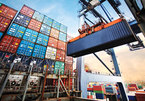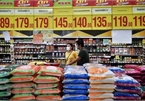The Genetal Statistics Office (GSO) reported that total import and export turnover in the first 8 months was estimated at $336 billion, a 0.3 percent decrease compared with the same period last year.
Of this, exports broughtturnover of $174 billion, up by 1.6 percent, while import turnover was $162 billion, down by 2.2 percent.

Vietnam had a trade surplus of $11.9 billion during that time. The domestic economic sector had a trade deficit of $11.2 billion, while foreign invested enterprises exported more than they imported by $23.1 billion.
The excess of exports over importsamid Covid-19 is believed to be an encouraging result.
Le Quoc Phuong, former deputy director of the Vietnam Industry and Trade Information Center (VITIC), commented that Vietnam has been enjoying a trade surplus for several consecutive years, which has helped the country increase forex reserves.
However, he pointed out that there are many concerns. First, the trade surplus is not attributed to an increase in exports, but to the significant decrease in imports.
Ninety percent of Vietnam’s imports are input materials, while consumer goods just account for 10 percent. So, the decrease in imports means a decrease in imports of production materials.
“The decrease in production material imports will affect domestic production in the future,” Phuong said.
| Vietnam's trade surplus in the first eight months of the year was a record high. However, experts still see risks. |
Second, the trade surplus only occurred in the foreign invested sector, while Vietnamese enterprises still saw a big trade deficit of over $10 billion.
Tran Toan Thang, a respected economist, said it is necessary to analyze two more figures to decide if the trade deficit is good or bad for Vietnam: total export turnover and total import turnover.
Both figures in the first 8 months were lower than the same period last year, though the decreases varied. The trade surplus in the first eight months was the result of a sharp fall in imports, not an increase in exports.
He agreed with Phuong that it would be not good news if the drop in imports was caused by a decrease in machine and material imports.
There are two reasons explaining why enterprises reduced imports. First, they cannot get orders from foreign partners,so they have not imported materials. Second, enterprises got orders, but the material supply chain has been disrupted. Enterprises mostly are using materials that they imported before to make products for export.
Commenting about export prospects, VEPR (Viet Nam Institute for Economic and Policy Research) said Vietnam can become one of the biggest farm produce exports amid the COVID-19 crisis and natural calamities, which are raging in many countries.
M. Ha

Trade upswing pressures local ports
After long expectations, EU businesses now have unprecedented market access to Vietnam’s inland shipping services, which heralds a great deal more competition as well as mounting pressure on the local seaport infrastructure.

Protocol amending ASEAN-Japan trade agreement becomes effective
The first protocol to amend the ASEAN-Japan Agreement on Comprehensive Economic Partnership (AJCEP) officially took into effect in Japan and the five ASEAN member states of Laos, Myanmar, Singapore, Thailand and Vietnam on August 1.